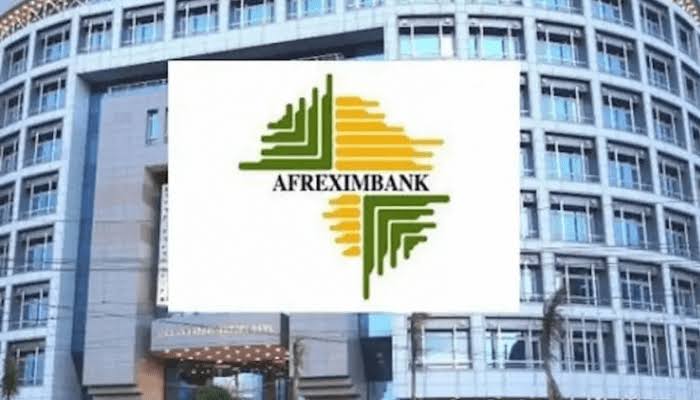African Export-Import Bank (“Afreximbank” or the “Group”) has released the consolidated financial statements of the Bank and its subsidiaries for the three months ended 31 March 2025.
Financial Highlights
Afreximbank Group delivered satisfactory financial performance for the first quarter of 2025, meeting expectations with solid profitability, strengthened liquidity and a resilient capital base.
This performance provides a springboard for the Bank to continue playing its pivotal role of advancing the aspirations of Africa and the Caribbean for economic transformation and sustainable development in the months and years ahead.
Net interest income grew by 4.53% to US$411.2 million compared to prior year, driven by growth in interest earning assets, complemented by effective management of borrowing costs, helping the Bank to cushion the marginal decline in total interest income due to softening benchmark rates.
Fee income from Guarantees and Letters of Credit saw robust growth of 47% and 36% respectively, partially offsetting lower advisory fees to contribute to total unfunded income of US$26.9 million for Q1-2025. While this represented a 7.41% decrease from US$29.0 million in Q1 2024, the strong performance in Off-balance sheet assets is in line with the Bank’s strategy to grow unfunded business.
The Group posted strong Net Income of US$215 million, a 21% increase year-on-year from US$178 million in the prior period.
The Group’s total assets and contingent liabilities increased by 6.4%, reaching US$42.7 billion as of 31 March 2025, up from US$40.1 billion at FY’2024. On-balance sheet assets grew by 4.85% to US$37.0 billion, driven primarily by a 58% surge in cash balances to US$7.4 billion, while Off-balance sheet assets i.e. letters of credit and guarantee volumes increased by a 19% to reach US$5.7 billion at the end of Q1-2025.
Net loans and advances closed Q1-2025 at US$27.8 billion, down from the FY2024 closing position reflecting early repayments from certain customers on account of improved foreign currency balances position of some sovereign borrowers. Importantly, the Loan Asset Quality remained strong, with the Non-Performing Loans (NPL) ratio at 2.44%, a modest increase from 2.33% at FY’2024 – well below the Bank’s strategic NPL ceiling of 4%.
Driven by inflationary pressures and growing personnel costs, operating expenses rose by 23% to reach US$75.4 million by 31 March 2025. Despite this, Afreximbank Group maintained a healthy Cost-to-Income Ratio of 16%, below its strategic range of 17-30%.
Afreximbank’s liquidity profile strengthened considerably, with liquid assets now comprising 20% of total assets, up from 13% at the close of FY’2024. This higher liquidity position was as a result of successful fund-raising, coupled with loan repayments received during the quarter.
Shareholders’ funds increased by 3.4%, reaching US$7.5 billion, driven by strong internally generated capital of US$215.4 million in addition to new equity investments under the second General Capital Increase (GCI II) programme.
Operating Highlights
In line with the Afreximbank strategic objective of driving Industrialisation and export development, the Bank and the Government of Kenya ratified a number of initiatives designed to support the development Industrial Parks (IPs) and Special Economic Zones (SEZs) in Kenya under the US$3 billion Kenya country programme. These projects which include Dongo Kundu Industrial Park in Mombasa and Naivasha SEZ II in Mai Mahiu, are key components of Kenya’s Vision 2030 plan to boost export manufacturing and industrialisation. Afreximbank’s support for these initiatives will specifically enhance infrastructure development, attract investment, and strategically position Kenya as a key hub for African and global commerce.
The rollout of the Pan-African Payments and Settlement System (PAPSS) continues to gain momentum with KCB Group in Kenya and Bank of Kigali in Rwanda launching the platform, becoming the first banks in their respective countries to offer seamless, instant, and affordable cross-border payments in local currencies across Africa.
Aligned with its mandate to promote Global Africa following the recognition of the African Diaspora as the 6th region of Africa, the Bank further cemented its expansion and presence in the Caribbean with the historic groundbreaking ceremony to kick off the construction of the first ever Afreximbank African Trade Centre (AATC) outside of Africa in Bridgetown, Barbados. AATC Barbados will also host its regional office. The Barbados AATC is an authentic icon of trade embodying the ambition, resilience, and influence of leading commercial cities in Africa and the Caribbean that serve as dynamic focal points for commerce, fostering regional and global trade connections, and is expected to enhance intra-and extra-African trade, with a focus on countries of the Global South.
Mr. Denys Denya, Afreximbank’s Senior Executive Vice President, commented: “Our QI 2025 results, which were in line with expectations, reflected a strong and resilient financial performance, notwithstanding continued macroeconomic challenges. With solid profitability growth, a strengthened liquidity position, and a well-capitalised balance sheet, the Group is firmly positioned to continue playing a pivotal role in advancing the aspirations of Africa and the Caribbean for economic transformation and sustainable development.”
Highlights of the results for the Group are shown below:
| Income statement Financial Metrics | Q1-2025 | Q1-2024 |
| Gross Income (US$ million) | 784.9 | 753.8 |
| Operating Income (US$ million) | 474.2 | 423.5 |
| Net Income (US$ million) | 215.4 | 178.7 |
| Return on average assets (ROAA) | 2.38% | 2.19% |
| Return on average equity (ROAE) | 12% | 12% |
| Cost-to-income ratio | 16% | 15% |
| Balance sheet financial metrics | Q1-2025 | FY-2024 |
| Total Assets (US$ billion) | 37.0 | 35.3 |
| Total Liabilities (US$ billion) | 29.5 | 28.1 |
| Shareholders’ Funds (US$ billion) | 7.5 | 7.2 |
| Net asset value per share (US$) | 71,671 | 69,695 |
| Non-performing loans ratio (NPL) | 2.44% | 2.33% |
| Cash/Total assets | 20% | 13% |
| Capital Adequacy ratio (Basel II) | 26% | 24% |

